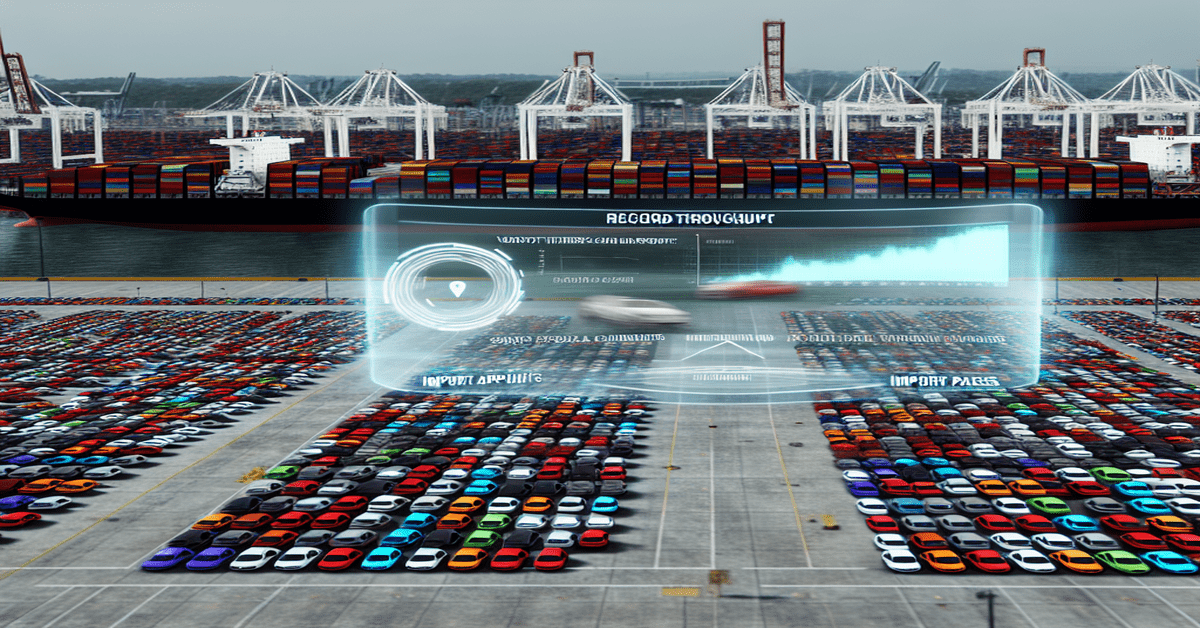Navigating the Turbulent Waters of Automotive Trade in 2025: How Digital Data is Driving Resilience
The automotive industry has always been a complex and dynamic sector, but the challenges posed by the current trade landscape in 2025 have taken complexity to new heights. With the introduction of new tariffs, trade volatility, and compliance risks, automotive supply chains are facing unprecedented disruptions that require innovative solutions. In this article, we’ll explore how digital data strategies are enabling the industry to navigate these turbulent waters and build resilience in the face of uncertainty.
The Impact of New Tariffs
In 2025, the U.S. introduced a series of tariffs that have sent shockwaves through the automotive industry. A 25% tariff on finished vehicles of all fuel types and tariffs on auto parts from non-U.S. or non-USMCA origins have forced companies to reassess their supply chain strategies. Additionally, country-specific tariffs, such as 34% on Chinese imports, 46% on Vietnamese imports, and 20% on EU imports, have further complicated the picture for major vehicle exporters, including Toyota, Honda, Subaru, Hyundai, Kia, Genesis, Volkswagen, BMW, and Mercedes-Benz, as well as Mexico and Canada[1].
These tariffs have caused significant disruptions across the automotive logistics ecosystem, impacting logistics service providers (LSPs), OEMs, terminal operators, and Roll-on/Roll-off (RoRo) carriers. The urgent need to adapt operations, reposition trade flows, and ensure compliance with new regulations has put immense pressure on these stakeholders to find new ways to manage their supply chains.
Supply Chain Disruptions and RoRo Volume Volatility
The introduction of new tariffs has led to a pattern of front-loading shipments followed by import pauses, causing operational volatility and disruption to sailing schedules and yard planning. In March, OEMs accelerated shipments into U.S. ports in response to impending tariff deadlines, causing congestion and record throughput at terminals like Brunswick, Jacksonville, and Baltimore. After the deadline passed, April saw a sharp slowdown in RoRo arrivals as companies reassessed trade routes and pricing models[1].
This volatile pattern is expected to continue through Q2 and Q3 of 2025, creating challenges for supply chain stakeholders as they try to manage yard space, optimize operations, and maintain efficient trade flows. The disruptions have highlighted the need for greater agility and resilience in automotive supply chains, as companies seek to minimize the impact of trade fluctuations on their operations.
The Role of Digital Data in Building Resilience
In the face of these challenges, digital data strategies have emerged as a critical tool for navigating the complexities of the current trade landscape. By leveraging real-time data and analytics, supply chain stakeholders can better manage trade fluctuations, forecast volume changes, optimize yard space during surges, and ensure regulatory compliance in a complex tariff environment[1].
Digital data tools provide supply chain managers with the visibility and insights they need to make informed decisions in an uncertain trade landscape. By integrating data from multiple sources, including logistics providers, carriers, and customs authorities, companies can gain a comprehensive view of their supply chain operations and identify potential disruptions before they occur.
For example, predictive analytics can help companies forecast changes in trade volumes and adjust their operations accordingly. By analyzing historical data on trade flows, tariff changes, and shipping patterns, companies can develop models that anticipate future disruptions and allow them to proactively adapt their strategies.
In addition, digital data tools can help companies ensure compliance with complex tariff regulations. By automating the process of tracking and reporting on the origin and content of auto parts and finished vehicles, companies can reduce the risk of non-compliance and avoid costly penalties.
Building a Data-Driven Future for Automotive Supply Chains
As the automotive industry continues to navigate the challenges of the current trade landscape, digital data strategies will become increasingly essential for building resilience and driving success. By investing in data-driven tools and processes, companies can gain the agility and insights they need to adapt to changing market conditions and maintain efficient, compliant supply chain operations.
However, building a data-driven supply chain is not a simple task. It requires a significant investment in technology, talent, and processes, as well as a willingness to embrace new ways of working. Companies that are able to successfully integrate digital data into their operations will be well-positioned to thrive in the face of future disruptions and uncertainties.
Conclusion
The automotive industry is facing a new era of complexity and uncertainty, driven by the introduction of new tariffs, trade volatility, and compliance risks. To navigate these challenges and build resilience, companies must embrace digital data strategies that provide the visibility, insights, and agility they need to adapt to changing market conditions.
By leveraging real-time data and analytics, supply chain stakeholders can better manage trade fluctuations, forecast volume changes, optimize operations, and ensure regulatory compliance. As the industry continues to evolve, those companies that are able to successfully integrate digital data into their supply chain operations will be best positioned to drive success in the years ahead.
#AutomotiveIndustry #SupplyChainResilience #DigitalData #TradeLandscape
-> Original article and inspiration provided by Automotive Logistics
-> Connect with one of our LeadsProMax.ai Strategists today at LeadsProMax.ai


